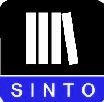The Da Vinci Code. I have been fascinated by the on-going legal dispute surrounding Dan Brown's The DaVinci Code and the issues that it has thrown up. Michael Baigent and Richard Leigh, two of the three authors of The Holy Blood and the Holy Grail, took Dan Brown to court accusing him of breach of copyright. Their book, published in 1982 as a work of non-fiction, claimed to show that Jesus and Mary Magdalene married and had a child whose descendents founded the Merovingian dynasty and continues today, with a secret society (the Priory of Sion) protecting their heirs against conspiracies enacted by the Church.
I am probably in a minority in that I have not read The Da Vinci Code (DVC) or seen the film (even though it contains the famous line "I've got to get to a library. Fast" which is a wonderful example of product placement by CILIP) while I did read Holy Blood and the Holy Grail (HBHG) when it was published in paperback. I am interested in Arthurian legends and one theme of HBHG was that the Holy Grail (san graal) is really the true bloodline of Jesus (sang real). I enjoyed the book at the time but did not think it was to be taken seriously.
In 2004 Dan Brown published The DaVinci Code, a work of fiction based around the same idea. Baigent and Leigh accused Brown of breach of copyright, claiming that the central framework of their book had been stolen by Brown. There was no doubt that Brown had used HBHG as a source, one of the fictional characters in DVC is Leigh Teabing which is made up from the names of the two authors (Teabing is an anagram of Baigeant). However the case revolved around an interpretation of copyright, had Brown copied a substantial part of HBHG? Baigeant and Leigh did not claim that Brown had copied the actual text of their book and inserted it into DVC. Instead they claimed that Brown had copied the architecture or structure of the work - that he had taken the essence of their book and presented it as his own work.
In his ruling against Baigent and Leigh the judge, Sir Peter Smith, pointed out that facts and ideas in themselves can not be copyrighted, only the expression of those facts is protected. He did not rule out the concept that a "central theme" could receive copyright protection but decided that the two authors had not proved their assertion that Brown had copied this. Sir Peter took the opportunity when publishing his ruling to include his own coded message which referred to Admiral Jackie Fisher and the building of the Dreadnought battleship in 1906.
Baigent and Leigh appealed against this ruling but in March this year the Appeal Court ruled against them. One of the judges stated that
“It [copyright] does not, however, extend to clothing information, facts, ideas, theories and themes with exclusive property rights, so as to enable the claimants to monopolise historical research or knowledge and prevent the legitimate use of historical and biographical material, theories propounded, general arguments deployed or general hypotheses suggested (whether they are sound or not) or general themes written about.”
What does this mean for librarians? One key aspect of this case was that HBHG claimed to be a work of non-fiction. If they had presented it as a work of fiction they would have had a stronger case for claiming that Brown had plagiarised their idea. As copyright expert Graham Cornish puts it "A fact is a fact and cannot be protected as such. However, the way in which information about facts is presented is protected." Graham uses an example of train times which are facts and the layout of a timetable which is protected. It is more complicated when a researcher develops a theory which not only presents single facts but puts these into an overall framework which increases our understanding of something. However, the Appeal Court ruling makes it clear that even this is a fact and the researcher cannot claim exclusive rights.
The concept of plagiarism is wider than copyright and, I think I am right in saying, is not dealt with by the law in the same way. I have covered this in my report of the recent presentation by the JISC Plagiarism Advisory Service on the SINTO wiki. If a university student copies the work of another and presents it as their own then they may be in breach of copyright but they are also in breach of the institutions own rules. If an author is shown to have plagiarised another work this may affects their reputation and could result in the cancellation of their contract with their publisher. Fiction also has different rules. If you are writing an academic paper and mention that Jesus and Mary Magdalene married and had children then you should provide a citation for this. In a work of fiction authors are not expected to insert citations or footnotes in the text but should provide an acknowledgement of their sources. A recent case involved Ian McEwan who was accused of copying extracts from the diary of a nurse in World War II in his novel Atonement. McEwan has defended himself strongly against these accusations, arguing that novelists have to do research and at times the words of real people do need to be included in fictional accounts.
As librarians we often take pride in the fact that writers and researchers rely on us to do the research that results in new discoveries or works of imagination. Stef Penney's prize-winning novel The Tenderness of Wolves researched in the British Library is an example. We do need to be aware of issues around copyright and plagiarism and to be able to help students, researchers and writers to navigate around the problems.
Wednesday, 4 April 2007
Subscribe to:
Post Comments (Atom)


No comments:
Post a Comment